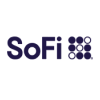Raydium
RAY-7.29%
About Raydium
DeFi
Industry Group
Exchanges
AMM
The Raydium price is $0.19, a change of -7.29% over the past 24 hours as of 3:15 p.m. The recent price action in Raydium left the tokens market capitalization at $27,636,942.78. So far this year, Raydium has a change of -97.04%. Raydium is classified as a DeFi under CoinDesks Digital Asset Classification Standard (DACS).
Raydium (RAY) is the native token of Raydium, a decentralized exchange native to the Solana blockchain that combines its liquidity with another Solana-based decentralized exchange (DEX), Serum.
RAY Price
RAY is both an ERC-20 token (meaning it is built on Ethereum) and a Solana Program Library (SPL) token. Its price is wildly volatile; it hit an all-time high of $16.93 in September 2021 but by June 2022, it had fallen to about $0.91.
All of its 555 million tokens were minted when the project launched on Feb. 21, 2021. Of this, 25.9% went to the team, their advisers and seed funders. They’ll receive their tokens from one to three years after launch.
The remainder of RAY will be distributed to those who provide liquidity to Raydium’s liquidity pools, and those who stake RAY in the protocol or its token farming programs. The largest portion, 34%, is reserved for liquidity miners, followed by 30% which is allocated for developing Raydium’s ecosystem through its incubators, Dropzone and AcceleRaytor. There is also 8% earmarked to provide liquidity to the platform; liquidity mining is expected to continue until February 2024 and rewards are halved twice a year.
How does Raydium work?
Raydium is an automated market maker, meaning it lets users swap in and out of vast reserves of tokens that others provide. Unlike most automated market makers, Raydium shares liquidity with another of Solana’s decentralized exchanges, Serum.
Serum isn’t an automated market maker. Instead of letting users swap tokens through liquidity pools, it uses a decentralized matching engine that pairs buyers with sellers. It’s similar to how exchanges like Binance or Coinbase work, or the traditional stock market.
Raydium’s algorithms work out whether it would be cheaper to fulfill a trade through its own liquidity pools – full of funds provided by liquidity providers (LP) – or through Serum’s order book. This is an attempt to get users the best price on a trade.
Raydium also brings more complex trading features often absent in AMMs, such as limit orders, which let users execute a trade when a token reaches a certain price.
Liquidity providers earn the platform’s native token, RAY, for providing their crypto in Raydium’s liquidity pools. LPs earn a cut of trading fees on the network; traders must pay a fee of 0.25% of their trade or swap, of which 0.22% goes to liquidity providers. The network uses the remaining 0.03% of trading fees to buy RAY from the secondary market, then distributes it to stakers.
Key events and governance
Raydium was co-founded by a pseudonymous developer called AlphaRay. According to an interview on “The Solana Podcast,” he’s a former proprietary trader who focused on arbitrage. He got into bitcoin in December 2017, then DeFi in 2020.
AlphaRay created Raydium when Ethereum gas, or transaction, prices started to rise. He often traded on FTX, a huge investor on Solana, so he called up the FTX team and asked them where he should build a project that makes DeFi more efficient. They advised Solana and mentioned they were working on Serum.
According to a deleted “info” page from November 2021, other key management members are also pseudonymous. Raydium’s chief technology officer was listed as “XRay,” its marketing and comms leader “GammaRay,” its senior developer “StingRay” and its head of security “RayZor.”
While the team manages the project, Raydium’s documentation says that RAY will one day function as a governance token. As of June 2022, this is still “in development.”
Quantum Economics Bitcoin Analyst Jason Deane joins "All About Bitcoin" to discuss his markets outlook as the lending arm of crypto investment bank Genesis Global Trading is temporarily suspending redemptions and new loan originations in the wake of FTX’s collapse. Plus, a conversation with Castle Island Ventures Partner Nic Carter about why proof of reserves could help to win back public trust in crypto.
Trending Assets
BTC
ETH
USDT
BNB
USDC
Bitcoin Calculator
CoinDesk’s Bitcoin and Cryptocurrency Calculator determines the exchange rates between major fiat currencies and cryptocurrencies – including BTC, BCH, ETH and XRP to USD, EUR, GBP, IDR and NGN – with up to six decimal places of accuracy. Conversion rates are based on CoinDesk’s Bitcoin Price Index and the price indices of other digital assets. World currency prices are based on rates obtained via Open Exchange Rates.
Research Reports
Diving in deeper on cryptocurrency.



:format(jpg)/cloudfront-us-east-1.images.arcpublishing.com/coindesk/63QGWL5LTBD3PCXUIQKUXHL2VM.jpg)
:format(jpg)/cloudfront-us-east-1.images.arcpublishing.com/coindesk/EJWJUYLSINBZTFGJMZSSS7SNPU.jpg)
:format(jpg)/cloudfront-us-east-1.images.arcpublishing.com/coindesk/RONYEB2JQ5A35FLPSB5QKK365U.jpg)